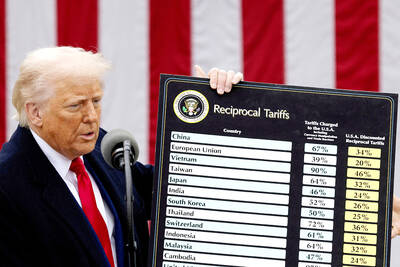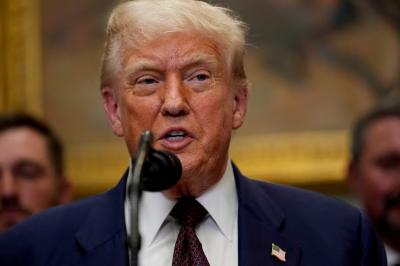Employers in the US kept cutting jobs last month and manufacturing picked up, pointing to an uneven economic recovery that will take time to encourage hiring, economists said before reports this week.
Payrolls fell by 175,000 workers last month, deepening the worst employment slump since the 1930s, according to the median of 63 estimates in a Bloomberg News survey ahead of a Friday Labor Department report. A purchasing managers’ report may show factories expanded at the fastest pace since 2006.
Rising joblessness and waning government assistance raise the risk that consumer spending will slip again, holding back the expansion. Federal Reserve policy makers, meeting this week, will probably debate whether the lack of jobs merits maintaining interest rates low for a long time, or if excess stimulus risks kindling inflation.
“No one’s going to hire anybody until they have to, so it’s a very tough environment for households,” said Joshua Shapiro, chief US economist at Maria Fiorini Ramirez Inc, a New York forecasting firm. “Manufacturing is clearly the strongest part of the economy right now because it’s benefiting from the need to restock.”
The jobless rate last month probably climbed to 9.9 percent, the highest level since 1983, from 9.8 percent in September, according to the survey median. Unemployment will exceed 10 percent early next year, according to the median forecast in a Bloomberg poll last month.
The projected drop in employment would be the smallest since August last year, indicating the labor market is deteriorating at a slower pace. Job losses peaked at 741,000 in January, the biggest one-month plunge since 1949.
Fed policy makers meet tomorrow and Wednesday in Washington and may repeat their pledge to keep interest rates low for an “extended period.”
The US economy grew at a 3.5 percent annual pace from July through September, the first quarterly expansion in more than a year, Commerce Department figures released last week showed. A separate government report showed consumer spending fell in September for the first time in five months.
Manufacturing probably accelerated last month, economists said.
The Institute for Supply Management may report today that its manufacturing index climbed to 53 last month, the highest level since August 2006, the survey median showed. Readings greater than 50 signal expansion.
A report from the Commerce Department tomorrow is expected to show that orders placed with US factories rose 0.8 percent in September from the previous month, according to the survey median. A gain would be the fifth in the past six months.
The jobs report on Friday may also show factory employment dropped by 46,000 workers last month compared with a 51,000 decrease in September. The US has lost a total of 7.2 million jobs since December 2007.
Some manufacturers are starting to rehire previously dismissed employees. Cummins Inc, the largest maker of heavy duty diesel truck engines in North America, cut about 7,500 workers from late last year through June and has since recalled about 900.
“Despite the improvements we have seen in some of our markets, we still face considerable challenges over the next year,” chief operating officer Tom Linebarger said on Friday on a conference call. “In particular, we expect the first half of 2010 to be extremely difficult, especially in North America.”
Inventories at wholesalers in September probably dropped at a slower pace, a Commerce Department report on Friday is expected to show. The 1 percent decrease, the smallest since January, suggests companies anticipate a pickup in sales and don’t want to deplete stockpiles much more.
The Standard & Poor’s 500 Index fell last week, marking the first monthly drop since February, after reports prompted concern that consumers will restrain the economic recovery.
In other reports this week, the number of contracts to buy previously owned homes were little changed in September, the first time in eight months they didn’t increase, according to the survey median. The National Association of Realtors’ report on pending home sales is due tomorrow.
Home sales have climbed in recent months, propelled in part by an US$8,000 tax credit for first-time buyers that is set to expire at the end of this month.
Senate Democrats want to extend the credit through April and expand it to allow higher-income Americans and some who already own homes to qualify for the incentive. The White House endorses the extension and lawmakers are expected to vote on the measure this week, according to Senate Majority Leader Harry Reid.

WAITING GAME: The US has so far only offered a ‘best rate tariff,’ which officials assume is about 15 percent, the same as Japan, a person familiar with the matter said Taiwan and the US have completed “technical consultations” regarding tariffs and a finalized rate is expected to be released soon, Executive Yuan spokeswoman Michelle Lee (李慧芝) told a news conference yesterday, as a 90-day pause on US President Donald Trump’s “reciprocal” tariffs is set to expire today. The two countries have reached a “certain degree of consensus” on issues such as tariffs, nontariff trade barriers, trade facilitation, supply chain resilience and economic security, Lee said. They also discussed opportunities for cooperation, investment and procurement, she said. A joint statement is still being negotiated and would be released once the US government has made

Authorities have detained three former Taiwan Semiconductor Manufacturing Co (TMSC, 台積電) employees on suspicion of compromising classified technology used in making 2-nanometer chips, the Taiwan High Prosecutors’ Office said yesterday. Prosecutors are holding a former TSMC engineer surnamed Chen (陳) and two recently sacked TSMC engineers, including one person surnamed Wu (吳) in detention with restricted communication, following an investigation launched on July 25, a statement said. The announcement came a day after Nikkei Asia reported on the technology theft in an exclusive story, saying TSMC had fired two workers for contravening data rules on advanced chipmaking technology. Two-nanometer wafers are the most

NEW GEAR: On top of the new Tien Kung IV air defense missiles, the military is expected to place orders for a new combat vehicle next year for delivery in 2028 Mass production of Tien Kung IV (Sky Bow IV) missiles is expected to start next year, with plans to order 122 pods, the Ministry of National Defense’s (MND) latest list of regulated military material showed. The document said that the armed forces would obtain 46 pods of the air defense missiles next year and 76 pods the year after that. The Tien Kung IV is designed to intercept cruise missiles and ballistic missiles to an altitude of 70km, compared with the 60km maximum altitude achieved by the Missile Segment Enhancement variant of PAC-3 systems. A defense source said yesterday that the number of

Taiwanese exports to the US are to be subject to a 20 percent tariff starting on Thursday next week, according to an executive order signed by US President Donald Trump yesterday. The 20 percent levy was the same as the tariffs imposed on Vietnam, Sri Lanka and Bangladesh by Trump. It was higher than the tariffs imposed on Japan, South Korea and the EU (15 percent), as well as those on the Philippines (19 percent). A Taiwan official with knowledge of the matter said it is a "phased" tariff rate, and negotiations would continue. "Once negotiations conclude, Taiwan will obtain a better